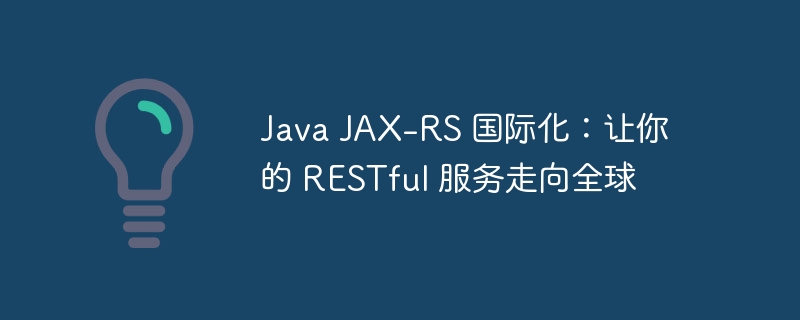

Java JAX-RS internationalization tutorial, explained in detail by php editor Banana. Through internationalization, you can make your RESTful service support multiple languages and adapt it to the needs of users in different regions around the world. This tutorial will guide you on how to implement internationalization capabilities in Java JAX-RS applications, making your services more competitive and providing a better experience for global users.
JAX-RS Internationalization allows you to customize the responses of a RESTful service for different languages and regions by defining different message bundles. Message bundles contain translations of specific messages in specific languages and regions.
The following steps demonstrate how to use JAX-RS for internationalization:
Demo code:
// 创建消息捆绑包类
public class Messages_en_US extends ResourceBundle {
@Override
protected Object[][] getContents() {
return new Object[][] {
{ "hello", "Hello" },
{ "world", "World" }
};
}
}
// 关联消息捆绑包与 JAX-RS 类
@国际化ResourceBundle("messages.en_US")
public class MyResource {
// 获取翻译
private String getTranslation(String key) {
return ResourceBundle.getBundle("messages").getString(key);
}
}In addition to translating text, JAX-RS internationalization allows you to format dates, numbers, and other values according to language- and region-specific conventions.
// 使用 @国际化格式化日期
@国际化格式("dd/MM/yyyy")
private Date date;By following the steps outlined in this article, you can easily internationalize your RESTful services using JAX-RS. This will expand the audience for your service and improve user experience, making your service more attractive globally.
The above is the detailed content of Java JAX-RS Internationalization: Take your RESTful services global. For more information, please follow other related articles on the PHP Chinese website!
 What does Douyin sw prompt sound mean?
What does Douyin sw prompt sound mean?
 Usage of && and || in c language
Usage of && and || in c language
 bootmgr is missing and cannot boot
bootmgr is missing and cannot boot
 colormap function usage
colormap function usage
 How to solve http error 503
How to solve http error 503
 How to check deleted call records
How to check deleted call records
 Detailed explanation of sprintf function usage
Detailed explanation of sprintf function usage
 What is the encoding used inside a computer to process data and instructions?
What is the encoding used inside a computer to process data and instructions?




